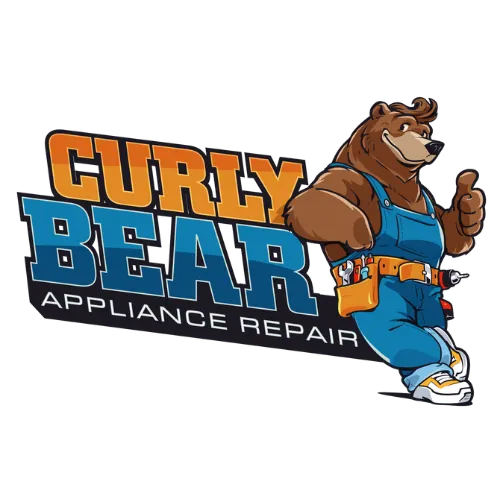
Trusted By Over 1000+ Local Homeowners

Tips for Modern Oven Issue: Self-Cleaning Feature Not Working
Tips for Modern Oven Issue: Self-Cleaning Feature Not Working
A self-cleaning oven is a great convenience, allowing homeowners to keep their appliances spotless without heavy scrubbing. However, what happens when this feature stops working? If your oven’s self-cleaning cycle isn’t functioning properly, don’t worry—you’re not alone. Many people experience this issue, and there are several reasons why it might be happening. This blog post will guide you through potential causes and solutions while answering common questions to help you troubleshoot effectively.
Why Is My Oven’s Self-Cleaning Feature Not Working?
There are several reasons why the self-cleaning function might not be working as expected. Some of the most common causes include:
Faulty Door Lock Mechanism – Most self-cleaning ovens have a safety lock that engages during the cycle. If the lock isn’t working properly, the cycle won’t start.
Malfunctioning Temperature Sensor – The self-cleaning process requires high temperatures. If the temperature sensor isn’t functioning correctly, the oven may not reach the required heat level.
Blown Thermal Fuse – A thermal fuse prevents overheating. If it’s blown, the self-cleaning feature may not activate.
Control Board Issues – The electronic control board regulates the oven’s functions. A faulty board can prevent the self-cleaning cycle from running.
Power Supply Problems – If there’s a problem with your oven’s power supply, it may not have enough energy to initiate the self-cleaning cycle.
Understanding these possible causes can help you identify the problem and determine the next steps.
How Can I Troubleshoot My Oven’s Self-Cleaning Function?
If your oven’s self-cleaning feature isn’t working, you can try these troubleshooting steps before calling a professional repair service like Curly Bear Appliance Repair:
Check the Door Lock – Open and close the oven door firmly to ensure it latches properly. If the lock isn’t engaging, clean any debris around the latch and test again.
Verify the Power Supply – Ensure the oven is properly plugged in and that there’s no tripped breaker.
Reset the Oven – Turn off the oven at the circuit breaker for a few minutes and then turn it back on. This can sometimes reset electronic components.
Inspect the Control Panel – Look for error codes or unusual lights on the control panel. Refer to the user manual for guidance.
Test the Temperature Sensor – If you suspect a sensor issue, use an oven thermometer to check if the oven is heating properly during regular use.
Look for a Blown Fuse – Some ovens have a thermal fuse that may need replacement if blown.
If these steps don’t resolve the issue, you may need a professional technician to diagnose the problem.
Is It Safe to Manually Clean a Self-Cleaning Oven?
Yes, you can manually clean a self-cleaning oven, but you should avoid using harsh chemicals. Instead, follow these steps:
Allow the oven to cool completely before cleaning.
Use a damp cloth to wipe away loose debris.
For stubborn stains, make a paste using baking soda and water. Apply it to the affected area and let it sit overnight before wiping it away.
Avoid using oven cleaners, as they can damage the oven’s special coating designed for self-cleaning.
While manual cleaning is a safe option, getting the self-cleaning feature repaired by experts like Curly Bear Appliance Repair ensures long-term convenience.
When Should I Call a Professional Repair Service?
If basic troubleshooting doesn’t fix the issue, it’s time to call a professional. You should seek professional repair if:
The oven door remains locked or won’t lock at all.
The control panel shows an error code you don’t understand.
The oven isn’t reaching the required temperature.
There are unusual smells, smoke, or sparks during the self-cleaning process.
A professional technician from Curly Bear Appliance Repair can accurately diagnose and fix the problem, ensuring your oven functions safely and efficiently.
How Can I Prevent Future Self-Cleaning Issues?
Regular maintenance can help prevent self-cleaning problems. Here are some tips:
Use Self-Cleaning Sparingly – Frequent use can wear down oven components. Try to use it only when necessary.
Wipe Up Spills Immediately – Cleaning spills as they happen reduces buildup that requires intense cleaning cycles.
Inspect the Door Lock Regularly – Ensure the locking mechanism is functioning properly before starting a self-clean cycle.
Schedule Regular Maintenance – A yearly check-up from a technician can help identify and fix minor issues before they become major problems.
By following these simple maintenance steps, you can keep your oven in top condition for years to come.
Conclusion
A non-functioning self-cleaning feature can be frustrating, but with the right troubleshooting steps and maintenance, you can keep your oven working efficiently. If you’re unable to fix the issue yourself, don’t hesitate to reach out to Curly Bear Appliance Repair for expert assistance. Regular maintenance and prompt repairs will ensure your oven remains a valuable asset in your kitchen for years to come.
Have you ever experienced issues with your oven’s self-cleaning feature? What troubleshooting steps worked for you?

Facebook
Instagram